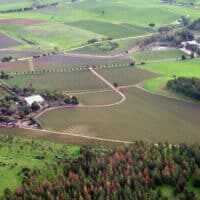Explore
Soil Impact Survey

How are my community's agricultural practices affecting the amount of carbon stored in soil and released from soil into the air?
Use the concepts below to apply your understanding of soil health and carbon to your community and neighborhood. Complete a survey of your community’s development and natural spaces, and examine the activities and technology that impact soil health and carbon levels there.

How is land used in your community?
Estimate the percentage (%) of your community's land that is covered by each:

Developed Areas
Homes, streets, parking lots, businesses, factories, and industrial farms

Natural Spaces
Landscaped parks, gardens, trees and shrubs along road and sidewalks, grasslands, forests, beaches, and lakesides

Bare Soil
Dirt roads, eroded areas, vacant dirt lots, construction sites, and unplanted fields
How is carbon released or sequestered in your community?
Carbon levels in the atmosphere can be affected by non-soil-based actions as well as soil-based actions. Non-soil-based actions that release carbon into the atmosphere include factory emissions, fires, lawnmowers, and gas-fueled transportation. Non-soil-based actions that decrease or prevent carbon emissions include bikes, gas fireplaces, and certain types of public transportation. On this Quest and in this survey, we are focused only on the soil, atmosphere, and carbon connection. As you survey your community and neighborhood, describe only actions and technology that are soil-based.
How large is your community?
How might the size of your community affect the amount of carbon released and sequestered there?
Urban

Urban communities are big cities with lots of people and buildings. They have a high population where there are more than 1,000 people per block.
Suburban

Suburban communities are an "in-between" of urban and rural communities. They are usually smaller towns just outside of urban cities.
Rural

Rural communities are small towns further away from big cities, with smaller populations.
